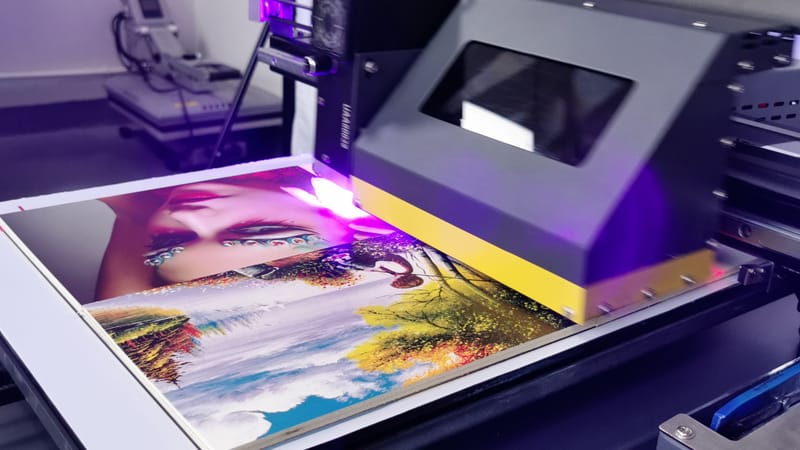UV and Silk Acrylic Screen Printing

UV Printing:
Unlike solvent inks that air dry or cure using heat, UV ink instantly reacts to UV light, drying it faster than any other method available. The ink dries instantly, it does not have time to evaporate into the air or be absorbed into the material it is printed on. As a result, the printed color is more vibrant and can be printed on a variety of surfaces. That also makes this method a much cleaner process as there is no time for smudging or spilling. UV printing also avoids emitting volatile organic compounds (VOC’s) that are extremely harmful to the environment.
UV ink is as durable as it is vibrant. The design will be scratch and abrasion resistant, meaning that you won’t have to worry about the ink chipping from the material. Although, if you purposefully try to remove the ink it will scratch with constant or very harsh abrasion.
Silk Screen Printing:
Modern screen printing has been around since the early 1900’s and has been the go-to process for printing on clothing and a variety of materials like plastic, glass, and metals. What makes this process unique from other printing methods is the use of stencils (screens) to imprint images onto the material. The process is akin to that of a stamp, where ink is transferred from a stencil onto a surface.
In screen printing, a mesh is used instead of solid stencil, but ink is still transferred from the mesh onto the material as pressure is applied to the mesh, forcing ink onto the surface. When multiple colors are used in a design, layers of stencils are used to print several colors separately into your design. While this gives the design a high quality aesthetic, it is hard to print complex designs using screen printing due to the limited size of the mesh stencils. We do not recommended that you use screen printing to produce photos because of that limitation.